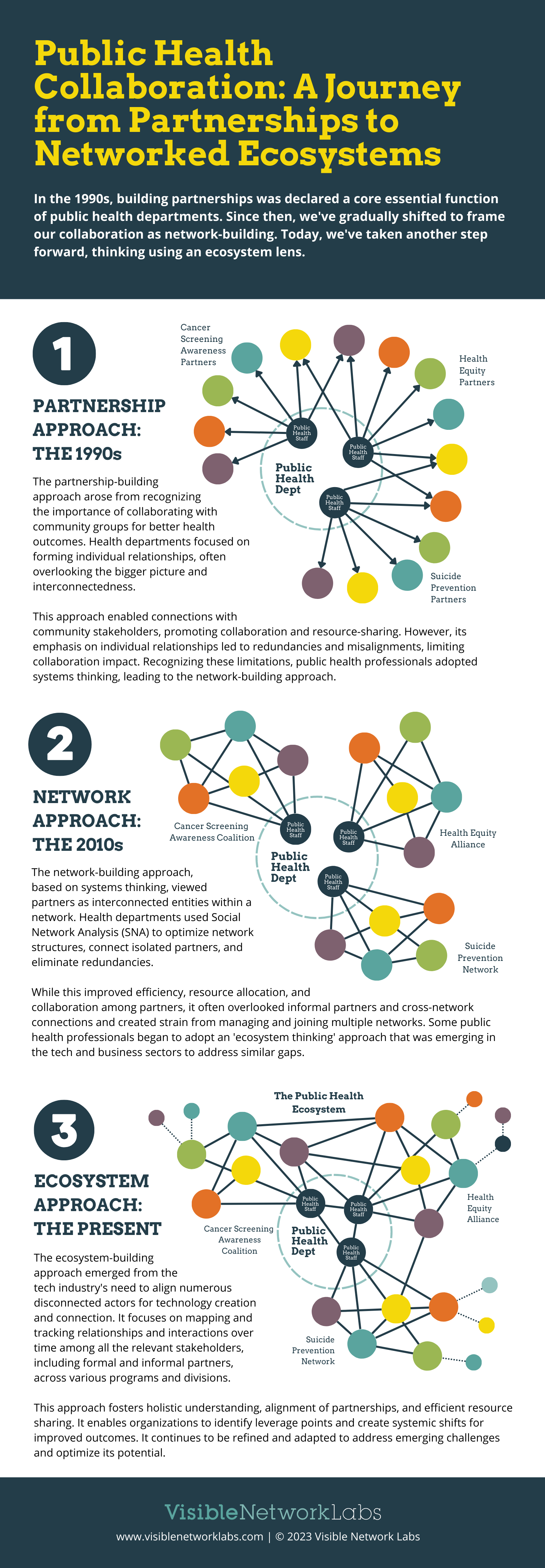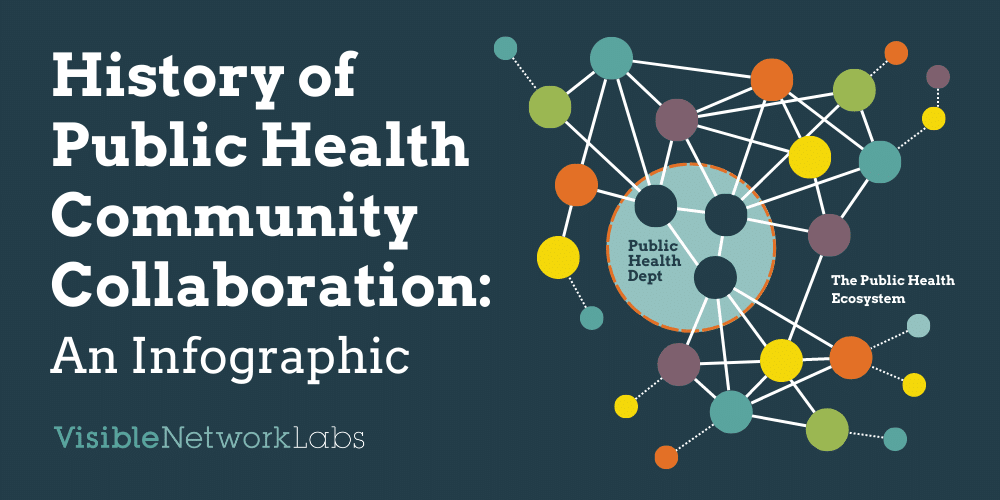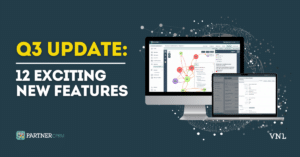Public health has long acknowledged the importance of partnership-building in achieving better health outcomes. As professionals in the field continually adapt their strategies to maximize the benefits of collaboration, various approaches have emerged. In our latest infographic, we present a comprehensive overview of these approaches and how they have evolved over time to address the challenges and limitations of each method.
The infographic begins with the traditional partnership-building approach, which focuses on establishing individual relationships with community groups. Although beneficial for resource-sharing and collaboration, this method faced limitations due to redundancies and misalignments. To overcome these challenges, public health professionals adopted systems thinking, leading to the network-building approach. This method revolutionized partnership-building by viewing partners as interconnected entities within a network and utilizing Social Network Analysis (SNA) to optimize structures and eliminate redundancies. However, the network-building approach had its own set of challenges, including overlooking informal partners and creating strain from managing multiple networks.
As you continue through the infographic, you’ll discover how public health professionals turned to the tech and business sectors for inspiration, adopting the ecosystem thinking approach. This approach, originally developed to align numerous disconnected actors in the tech industry, focuses on mapping and tracking relationships and interactions among all relevant stakeholders over time. By fostering a holistic understanding and alignment of partnerships, the ecosystem-building approach enables efficient resource sharing and improved outcomes.
Explore our infographic to gain a deeper understanding of the evolution of partnership-building approaches in public health, and learn how each method has been refined and adapted to address emerging challenges and optimize collaboration.

Having explored the evolution of partnership-building approaches in public health through our infographic, it’s clear that the ecosystem-building approach holds significant promise for addressing the challenges faced by traditional methods. In order to fully harness the potential of this approach, it’s essential to have the right tools and resources at your disposal. That’s where PARTNER CPRM comes in.
PARTNER CPRM is a cutting-edge software platform specifically designed for tracking networked ecosystems of public health partners over time. By focusing on the key aspects of ecosystem-building, PARTNER CPRM enables you to identify leverage points, improve communication and collaboration, and link collaborative processes to tangible community outcomes. The platform boasts a user-friendly interface and advanced analytics capabilities, empowering organizations to make data-driven decisions and strategically invest their time and resources.
As a public health professional, you understand the importance of fostering strong partnerships to achieve the best possible health outcomes for your community. With PARTNER CPRM, you can unlock the full potential of ecosystem-building, ensuring that your collaborative efforts lead to meaningful, lasting results.
We understand that every organization’s needs and goals are unique, which is why we invite you to request a personalized demo of PARTNER CPRM. Our experts will walk you through the platform’s features and capabilities, tailoring the demonstration to your specific context and requirements. Experience firsthand how PARTNER CPRM can revolutionize the way you collaborate within the public health sector and help drive positive change in your community. To request your personalized demo, simply click here.
Our team of experts is looking forward to helping you enhance your public health partnerships and maximize the impact of your collaborative efforts.






